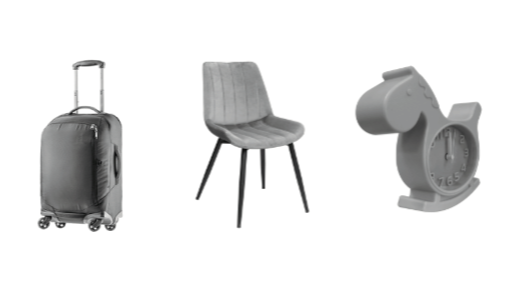
Diego Francoise Ortega Sanabria
Technical Secretary at the Commission of Inventions and New Technologies – INDECOPI
In those economic sectors in which there is tough competition and the goods offered to the public are very similar regarding technical benefits, it is more than likely that the particular appearance given to products could become the decisive factor in consumers’ decision-making. Therefore, the development and innovation of designs may constitute a competitive advantage. Designs may consist of an arrangement of lines or a combination of colours, two-dimensional or three-dimensional shapes, lines, outlines, configurations, textures or material.

As with other creations, designs are protected by intellectual property. In this sense, new and singular designs may get exclusive market protection for a limited period of time. In fact, the Agreement on Trade-Related Aspects of Intellectual Property Rights (TRIPS), with 164 Member States (including countries of the European Union and Latin America) compels its Members to confer protection to new or original designs for no less than 10 years. So, if you build the market strategy of your company on the introduction of products with new designs, make sure that your designs are provided with market exclusivity.
However, you should also take into account that TRIPS allows its Members to deny design protection in certain cases. For instance, it is possible to reject protection for designs based only on technical or functional considerations. Why is protection denied in these cases and how can it be concluded that a design falls within this category? First, it is essential to keep in mind that design protection is not granted to technical innovations because these are already safeguarded through the patent system. Perhaps the issue is how to determine that a design is essentially dictated by technical or functional considerations. Thus, we will tackle this question under the approach adopted by the Andean Community, aiming to provide clarity for those who wish to introduce their products in the countries parties to this South American regional organisation.
The Andean Community, which includes Bolivia, Colombia, Ecuador and Peru, has a common industrial property legislation established by Decision 486/2000, which sets forth that design protection is not available for those designs dictated by technical considerations or for the achievement of a technical function without the arbitrary involvement of the designer (Article 116.b).
First, it should be taken into account that, when it comes to products introduced into the market, both appearance and functionality are inseparable elements. In this sense, said prohibition should not arise only because the design the protection of which is sought fulfils a technical function or because the design offers an improved function of the product to which it is applied. Unfortunately, for a long time, the Andean IP offices rejected various design applications only based on the fact that the appearance the protection of which was sought had a technical function.
However, the Court of Justice of the Andean Community (CJAC), which functions as the jurisdictional body of this regional organisation, has already provided some guidance on this matter. Indeed, in Process 248-IP-2015, it was established that, in order to determine that a design falls within the discussed prohibition, it must be assessed whether it is the result of an arbitrary and unique contribution of its creator, regardless of its function or technical effect. Insofar as arbitrariness is conceptually linked to a person’s will, any analysis made under the light of this prohibition must be carried out taking into account the intention behind the creation or development of the appearance the protection of which is sought. So, if the only factor behind the development of the shape of a product was the desire for it to have a better function or a technical advantage, then protection will not be granted.
The aforementioned conclusion follows the so-called ‘causality approach’. This approach is also followed by the European Union, as a result of the interpretation made by the Court of Justice of the European Union (CJEU) in the Case C-395/16, in which it was established that, in order to conclude that a design is exclusively related to a technical consideration, it is necessary to assess whether this consideration was the only factor that the designer had in mind when the appearance of the product was developed.
Notwithstanding the above, it is important to mention that, for IP offices that use the ‘causality approach’, such as the offices of the Members of the Andean Community, it could be difficult to determine the designer’s intention regarding the development of a design, as well as whether it was only associated to the purpose of enabling a new or better function to the product to which the design is applied. In this regard, it must be stressed that the analysis should be made on a case-by-case basis.
For instance, a parallel patent application filed by the same person and addressed to the protection of the same product may have information that could lead to conclude that the factor which determined the development of the design discussed was the provision of a technical advantage.
Moreover, arguments provided by the applicant to defend the registrability of their design may be useful to determine whether it falls under said prohibition if they are only supported by technical elements. For example, in 2019, the Peruvian IP authority (Indecopi) issued a Decision in a case related to a design for a ‘dog waste catcher and holder’, in which, in order to defend the singular appearance of her product, the applicant sustained that its configuration allowed the dispose of waste in such a way that there would be no need of hand contact. Thus, Indecopi determined that the development of the appearance in question was focused on the achievement of technical considerations and, as a consequence, protection was denied.
In conclusion, if your product has a functional design, the technical aspects cannot automatically exclude it from being protected in Europe or in the Andean Community. The appearance of your product will be protected by this IP right as long as its creation involves not only functional and technical considerations but also the will for it to have a singular appearance, which makes it more attractive to consumers.
Details
- Publication date
- 13 January 2021
